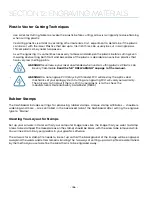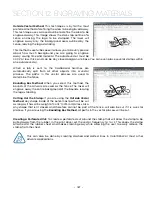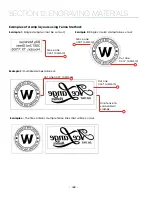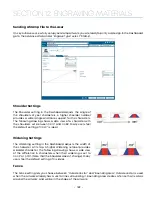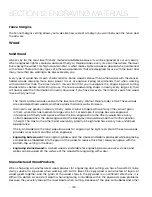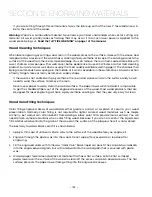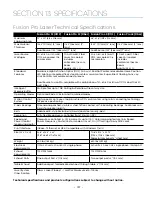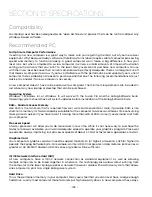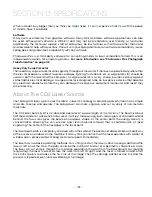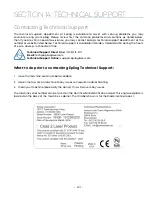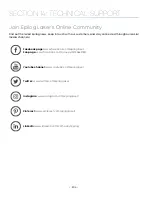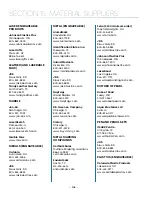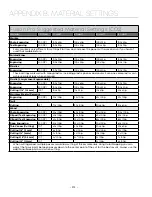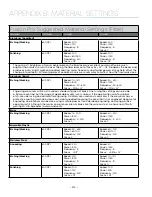
About the Fiber Laser Source
The fiber laser source generates a laser beam by pumping intense diode light into the end of fiber optic
cables that have been doped with ytterbium. The energy from the diode light is absorbed by the ytterbium
in the fiber optic cables. The ytterbium then releases the energy in the form of photons that travel down
the optic cables. The photons that leave the optic cables create the laser beam. The wavelength of light
generated from a fiber laser is 1062 nm.
The fiber laser source generates laser light by pumping intense diode light into fiber optics cables that
are doped with the rare-earth element, ytterbium (Yb3+), which is referred to as the medium or gain
medium. As this diode light energy travels into the fiber optic cable, it energizes the electrons in the
ytterbium and the ytterbium electrons go from a ground or stable state, to an excited state.
Essentially, all that is happening in this first step is that the electrons in the medium are absorbing and
storing the energy that’s coming from the external energy source (diodes). For reference, the CO2 medium
is the CO2 gas in the tube, and the external energy source is RF electrical current. In the fiber laser (and
also most YAG lasers these days and YVO lasers) the external energy source is a laser diode.
The electrons in the medium don’t really want to store the external energy they’ve absorbed, so they emit
the extra energy by releasing a photon (a quantum packet of light). Once a photon has been emitted by
one electron in the medium it stimulates other excited electrons to also emit photons, creating a chain
reaction where the absorption and emission of energy is at a constant rate. The photons travel through
the optic fibers and some are released through the end of the fibers as the laser beam.
By continually pumping energy into a medium, that medium tries to shed the excess energy by emitting
photons. The type of medium is important because different mediums absorb different types of energy
(for instance, a CO2 gas medium is not going to absorb the energy from a diode in a way that will make
the CO2 gas lase). Different mediums also emit different wavelengths of photons, and hence, the different
properties of different wavelength lasers.
Federal Communications Commission (FCC)
Notice
This equipment has been tested and found to comply with the limits for a Class A digital
device, pursuant to Part 15 of the FCC rules. These limits are designed to provide reasonable
protection against harmful interference when the equipment is operated in a commercial
environment. This equipment generates, uses, and can radiate radio frequency energy; and,
if not installed and used in accordance with the instruction manual, may cause harmful interference to
radio communications. Operation of this equipment in a residential area is likely to cause harmful
interference, in which case the user will be required to correct the interference at his/her own expense.
- 200 -
SECTION 13: SPECIFICATIONS
Summary of Contents for Fusion Pro 32
Page 2: ......
Page 6: ......
Page 14: ...Fusion Pro 48 8 SECTION 1 SAFETY ...
Page 15: ... 9 SECTION 1 SAFETY ...
Page 18: ......
Page 28: ......
Page 60: ......
Page 98: ......
Page 108: ......
Page 132: ......
Page 162: ......
Page 184: ......
Page 202: ......
Page 214: ......
Page 216: ......
Page 242: ......

